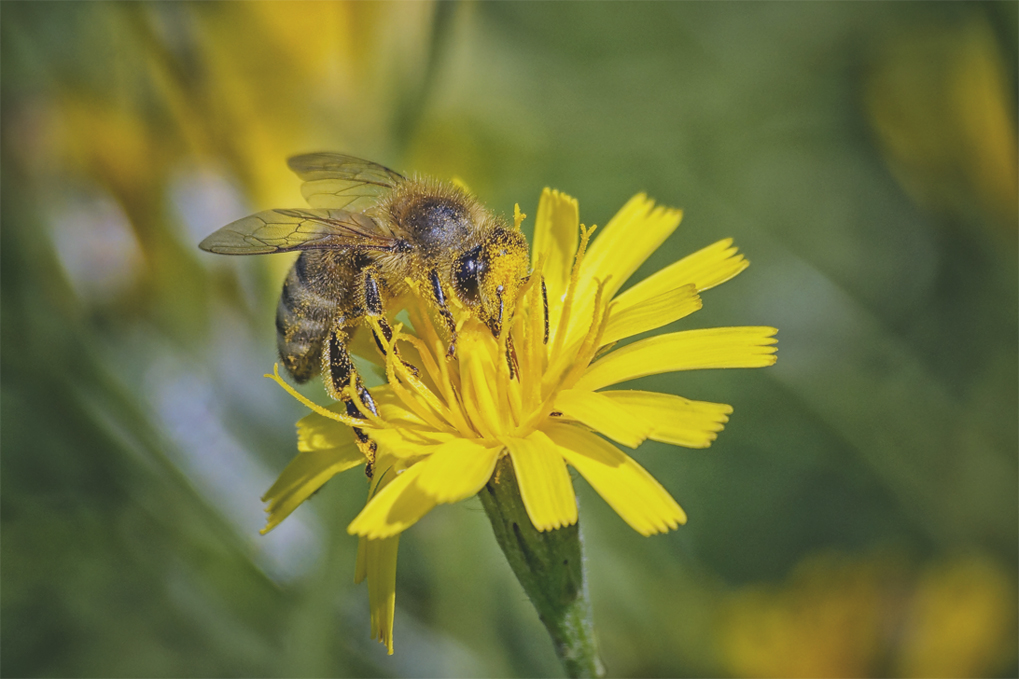BEES MAKING WAX
Bees make beautiful things.
Where Does Beeswax Come From?
Did you know beeswax is made from honey? It’s true. Bees collect nectar and pollen to make honey to feed the hive. As they eat honey, their bodies make wax. Chewing this wax with a little more honey, the bees build combs. When the time is just right, beekeepers open these “honey pantries” to collect the extra honey — and we collect combs to make pure beeswax candles.

How Do Bees Make Beeswax?
It all begins on a flower in a field. Bees collect nectar from flowers and bring it to the hive where it becomes either beeswax or honey. A bee’s diet consists primarily of honey, and any honey not consumed by the bees or in the raising of brood is stored as surplus and is ultimately consumed in the winter months when no flowers are available. However, it is honey’s other use that interests us, its conversion into beeswax.

The production of beeswax is essential to the bee colony. It is used to construct the combs in which the bees raise their brood and into which they store pollen and surplus honey for the winter.
Worker bees, which live only around 35 days in the summer, develop special wax-producing glands on their abdomens (inner sides of the sternites of abdominal segments 4 to 7) and are most efficient at wax production during the 10th through the 16th days of their lives. From about day 18 until the end of its life, a bee’s wax glands steadily decline. Bees consume honey (6-8 pounds of honey are consumed to produce a pound of wax) causing the special wax-producing glands to covert the sugar into wax which is extruded through small pores. The wax appears as small flakes on the bees’ abdomen. At this point the flakes are essentially transparent and only become white after being chewed. It is in the mastication process that salivary secretions are added to the wax to help soften it. This also accounts for its change in color.
The exact process of how a bee transfers the wax scales from its abdomen to its mandibles was a mystery for years. It’s now understood to be processed in either of two ways. Most of the activities in the hive are cooperative so it should be no surprise that other worker bees are willing to remove the wax scales from their neighbors and then chew them. The other method is for the same bee extruding the wax to process her own wax scales. This is done using one hind leg to move a wax scale to the first pair of legs (forelegs). A foreleg then makes the final transfer to the mandibles where it is masticated, and then applied to the comb being constructed or repaired.
Beeswax becomes soft and very pliable if the temperature is too high (beeswax melts around 149 degrees Fahrenheit). Likewise, it becomes brittle and difficult to manage if the temperature is too low. However, honeybees maintain their hive at a temperature of around 95 degrees Fahrenheit, which is perfect for the manipulation of beeswax.
A honeycomb constructed from beeswax is a triumph of engineering. It consists of hexagon shaped cylinders (six-sided) that fit naturally side-by-side. It has been proven that making the cells into hexagons is the most efficient shape for using the smallest possible amount of wax to contain the highest volume of honey. It has also been shown to be one of the strongest possible shapes while using the least amount of material.
The color of beeswax comprising a comb is at first white and then darkens with age and use. This is especially true if it is used to raise brood. Pigmentation in the wax can result in colors ranging from white, through shades of yellow, orange, red, and darker all the way to brownish black. The color has no significance as to the quality of the wax (other than its aesthetic appeal). Formerly, wax was bleached using ionization, sulphuric acid or hydrogen peroxide which resulted in the inclusion of toxic compounds. Bleaching has now been abandoned by reputable candle manufacturers and other suppliers of beeswax.
If beeswax has a medicinal smell, chances are that it has been chemically altered or bleached. Here at Beeswax Co. LLC, we only use North American beeswax that is 100% pure… definitely not chemically processed. Smell one of our candles for proof of its purity!

